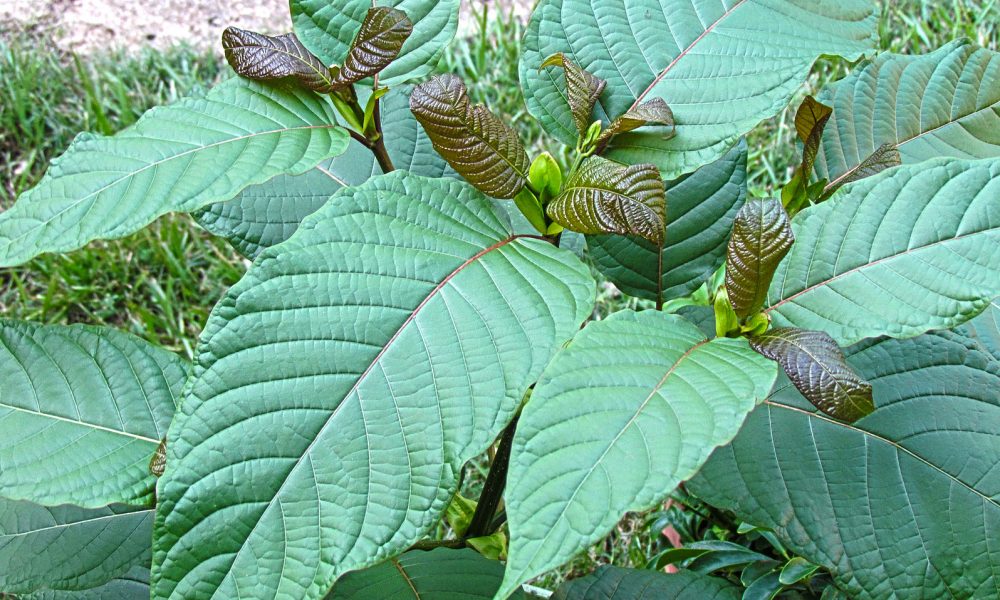Kratom is a tree found in Southeast Asia. Its active ingredient is the alkaloid mitragynine and it’s been used as an herbal alternative since the 19th and 20th centuries. Kratom has been known to have anti-inflammatory, antipyretic, antidiarrheal, and analgesic effects. It’s also been known to improve libido and sexual performance while managing diabetes symptoms, mitigating pain, and treating opiate addiction.
Kratom is a tree found in Southeast Asia.
Kratom is a tropical evergreen tree that grows to about 150 feet tall. It’s native to Southeast Asia and can be found in Indonesia, Malaysia, Myanmar (Burma), and Thailand. Kratom belongs to the Rubiaceae family—a group of flowering plants that includes coffee, gardenia, and Madagascar periwinkle.
Kratom trees grow best in tropical climates with high humidity and temperatures between 70-80 degrees Fahrenheit.
Kratom’s active ingredient is the alkaloid mitragynine.
As you probably know, kratom is a plant. It’s commonly found in Southeast Asia, though it’s also grown in other areas of the world.
Kratom is made up of many different alkaloids (chemicals that have a particular effect on your body). The most common one is mitragynine, which acts as an analgesic (pain reliever), muscle relaxant, and central nervous system stimulant. It can also have anti-tussive effects if taken at high doses—meaning it’ll help suppress coughs. Mitragynine has been linked to reducing inflammation and being an anti-inflammatory agent as well!
The typical dose is 2 to 5 grams of kratom.
Kratom capsules are typically 2 to 5 grams, which is enough for a single dose. This means that it’s best to divide your powder or leaves into multiple doses and take them throughout the day. If someone doesn’t know how much kratom they need per dose, it’s best to start with a small amount (1 gram). That way you can see how you react before increasing your dosage.
If you’re just getting started with kratom and want some guidance, there are plenty of online resources where people share their experiences with different strains and dosages. Many people say that two grams are enough when taken in small doses throughout the day; others have found success with higher dosages (5–10 grams) when attempting to treat chronic conditions such as pain or depression.*
Kratom comes in three different vein colors.
Kratom comes in three different vein colors. Red, green, and white. The red vein is the most potent and can be a bit too much for some people who are not used to it. The white vein is the least potent of all three and has been reported as having no sedative effects at all by some users. Green veins are somewhere in between these two extremes with sedative-like effects that can be very pleasant for some users but may not be strong enough for others who want something more powerful.
Kratom has been used as an herbal alternative in traditional medicine since the 19th and 20th centuries.
Kratom has been used as an herbal alternative in traditional medicine since the 19th and 20th centuries. Traditionally, kratom leaves have been used for pain relief, as an energy booster, to treat diarrhea and fever. Kratom has also been used as a substitute for opium or morphine when they were not available.
Kratom has been known to have anti-inflammatory, antipyretic, antidiarrheal, and analgesic effects.
Kratom has been known to have anti-inflammatory, antipyretic, antidiarrheal, and analgesic effects. Kratom can help with pain, fever, diarrhea, and other symptoms. Many people who have used kratom say that it helps them with their anxiety. Some people say they use kratom to relieve the symptoms of irritable bowel syndrome (IBS). It is also believed that kratom may be useful for treating diarrhea or reducing inflammation caused by arthritis or Crohn’s disease.
There are many strains of kratom, but only a few of them offer beneficial effects.
Kratom comes in several strains, and each has its own unique effects. Here are some of the most common strains:
- Maeng Da
- Red Vein Borneo
- Red Vein Thai
- White Vein Borneo
Some potential health benefits of kratom are mitigating pain, reducing anxiety, depression, and insomnia, improving libido and sexual performance, managing diabetes symptoms, and treating opiate addiction.
Kratom can be used to treat pain, anxiety, depression, and insomnia. The herb can also improve libido and sexual performance. It can manage diabetes symptoms and treat opiate addiction.
Kratom may help with:
- Opiate withdrawal symptoms – Kratom has been shown in some studies to be a viable alternative to methadone or buprenorphine when it comes to managing opiate addiction.
- Pain management – In low doses kratom is known to have analgesic properties that could relieve pain associated with conditions like arthritis. Higher doses of kratom are known to cause sedation which can help you sleep better at night if you have trouble sleeping due to chronic pain issues or insomnia caused by restless legs syndrome (RLS).
The medicinal effects of kratom vary from person to person due to factors such as health conditions, age, and dosage taken.
The medicinal effects of kratom vary from person to person and are dependent on factors such as health condition, age, and dosage taken.
- Strain: Different strains of Kratom have different effects on the body. The most common ones are red vein Borneo (RVB) and white vein Borneo (WVB).
- Dosage: How much you take can affect how it affects you.
For example, if an individual takes more than 1 gram at a time then the effect is likely to last longer than if they took 0.5 grams or less at a time; this would also increase their chance of experiencing side effects like nausea or dizziness when compared with someone who was taking half as much or less than them!
- Method Of Consumption: The method by which one consumes kratom also matters greatly when looking into its medicinal benefits because this could lead to better absorption which may result in higher levels of alkaloids being consumed over longer periods during consumption rather than one shot consumption methods such as chewing raw leaves alone without anything else added into them before chewing them up!
Kratom can be used for many functions, but not all strains provide health benefits
Kratom is a tree found in Southeast Asia. It’s been used for years for medicinal purposes, but the FDA warns that it has potential risks and side effects. Kratom is also known as Mitragyna speciosa, or mitragyia speciosa. The active ingredient of kratom is the alkaloid mitragynine.
The FDA says that kratom can be addictive and may cause nausea, vomiting, constipation, and liver damage when taken in large doses (more than 15 grams). Because of this increased risk for addiction, people who take high doses over long periods of time may become dependent on kratom just like they would with other drugs such as opioids or alcohol.
Kava-kava root extract: This herbal supplement contains an active ingredient called kavalactones. It’s frequently used to treat anxiety disorders because it affects some parts of the brain involved in anxiety responses
Conclusion
In the end, kratom is a plant with many potential uses. It can be used for medicine, but it’s also a powerful tool for meditation or spiritual growth. Kratom has been used as an alternative to prescription painkillers and other drugs, but it’s also been abused as an addictive drug. You should be aware of these risks before trying kratom yourself or recommending it to anyone else!
Medical Disclaimer:
The information provided in these blog posts is intended for general informational and educational purposes only. It is not a substitute for professional medical advice, diagnosis, or treatment. Always seek the advice of your physician or other qualified healthcare provider with any questions you may have regarding a medical condition. The use of any information provided in these blog posts is solely at your own risk. The authors and the website do not recommend or endorse any specific products, treatments, or procedures mentioned. Reliance on any information in these blog posts is solely at your own discretion.






